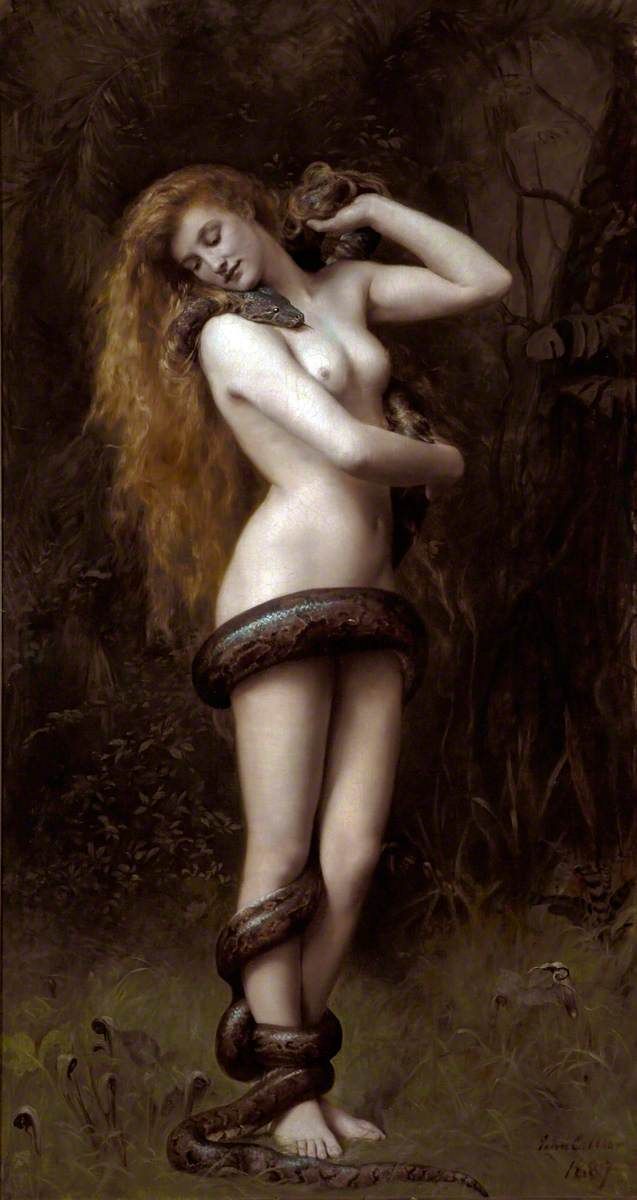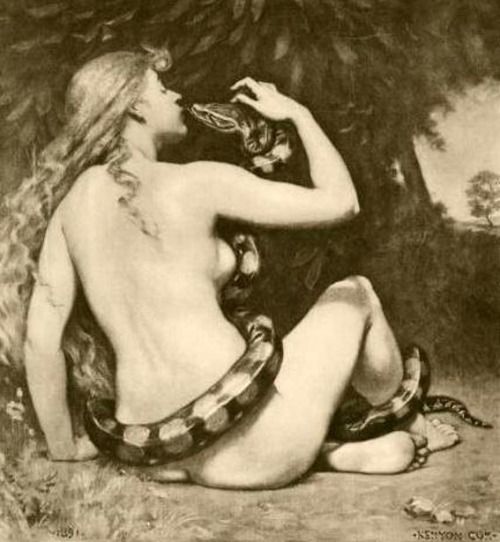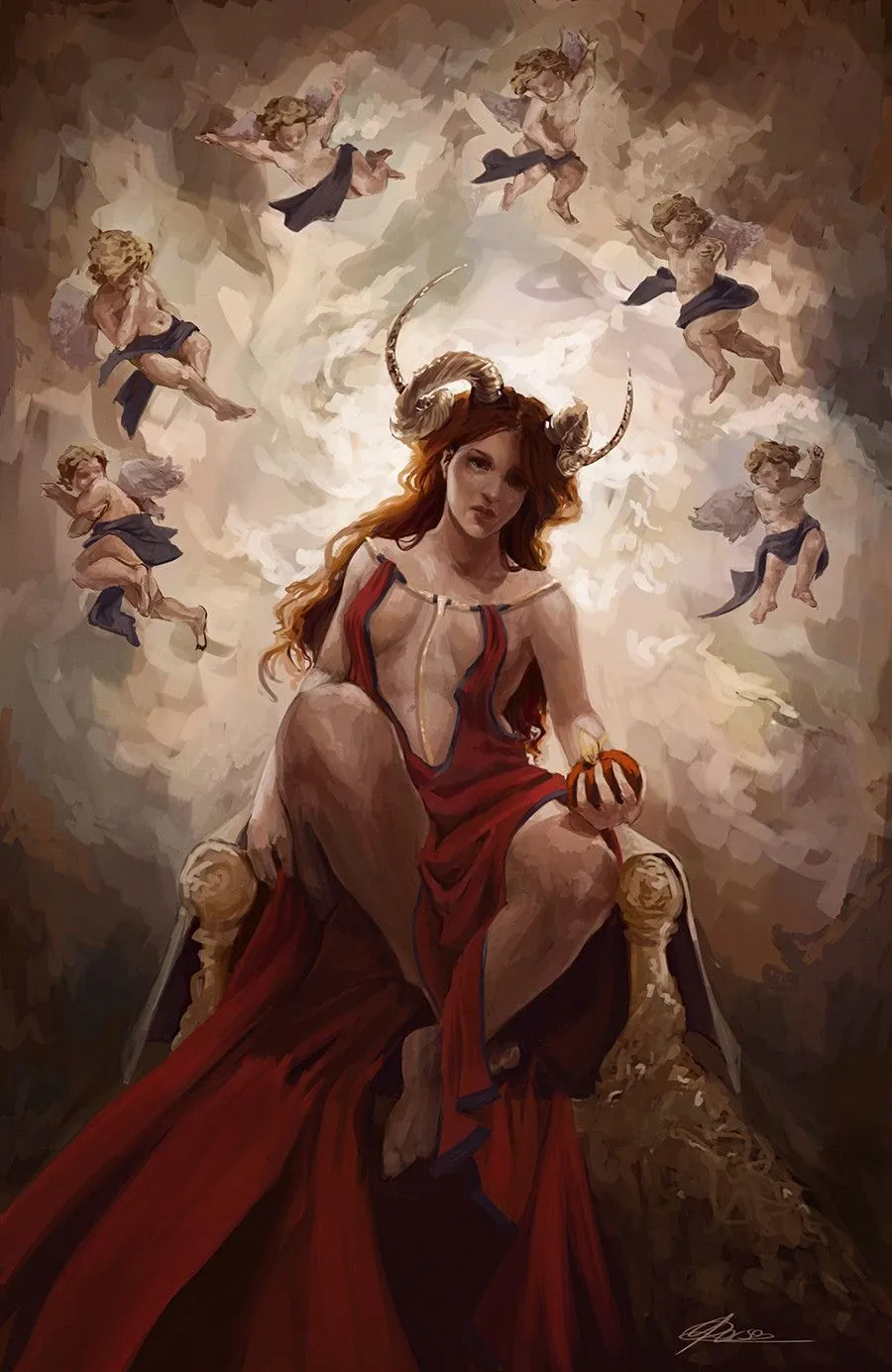Shabbat Gathering: A Lilith midrash or two.

Dear Chevra, as is our custom, we will gather tonight at 5.45p ct to welcome Shabbat. These are the coordinates:
Zoom
Meeting ID: 963 5113 1550
Password: 1989
Phone: +1 312 626 6799
(To unsubscribe from the newsletter, click the link at the very bottom of this email.)
Here we go.
One of my all time favorite things about being a Jew is the wealth of midrash available to us. Midrash are the tales and stories that spring up over the centuries helping us stitch together some of the apparent gaps and resolve contradictions in Torah. Take, for example, this week’s portion, Bereshit (Genesis 1:1-6:8). Let’s take a look at the midrash about Lilith, maybe my favorite midrash. It’s kind of sexy.
I don’t know how long ago it’s been since you’ve read the creation story, but you probably remember when it comes to creating people, there are actually two creation stories in Genesis. In the first, Hashem creates man and woman. In the second, Hashem creates man and then creates woman out of man’s rib. So, what’s up with that? Well, there’s a midrash that “fixes” the apparent confusion.

Adam and Lilith.
According to one of the most widely read midrash, in the first creation story, Hashem created Adam and Lilith and the relationship did not go well. Adam and Lilith decide to participate in some hanky-panky and there was a difference of opinion between them about who should be on top during the act of love. Adam maintained that he should be on top. Lilith maintained that she should be on top. And the two couldn’t reach a mutually satisfying agreement. They didn’t see a sex therapist and the Karma Sutra hadn’t been written yet.
Lilith became quite cross. She uttered the holy name, flew up in the air, and fled. Hashem sent three angels after Lilith and found her in the Sea of Reeds, where the Egyptians would eventually drown. When the angels found Lilith, she decided to continue her argument and told the angels that she would threaten new born children. And that’s why we sometimes have amulets for newborn children, tie a red ribbon to the crib, or ask people to sit up with newborn children for 24 hours a day until the baby naming or brit milah. Lilith, in this reading, is a demon.
G-d decided to do a do over and created a more passive woman for Adam, Eve.
Well, there is not a cut-off date for creating midrash and we can’t expect modern feminists to leave this alone. They haven’t.

A modern reading.
According to The Jewish Women’s Archive, there are some modern midrash that are alternatives to the Lilith story. One in particular is by Judish Plaskow. Plaskow took the original midrash and nudged it so that Lilith is an empowering figure, someone who becomes Eve’s friend. You can find the midrash in Plaskow’s book, The Coming of Lilith: Essays on Feminism, Judaism, and Sexual Ethics, 1972-2003.
From The Jewish Women’s Archive:
"The Coming of Lilith" also examines the potential power of sisterhood to transform the world and right its inequities. Eve and Lilith build "a bond between them" by telling each other stories, laughing and crying together, and teaching each other many things. This bond between women has the potential to be a catalyst for change, as shown by the concluding line of Plaskow’s story: "And God and Adam were expectant and afraid the day Eve and Lilith returned to the garden, bursting with possibilities, ready to rebuild it together."
There are thousands of midrash and anyone can write them. Perhaps some will pass the test of time. Perhaps some won’t. There aren’t any rules for writing midrash.

I’m hardly the first to notice it, but people are story tellers, and midrash is a type of storytelling that connects us to some of the most important stories we have. If you’re interested in finding and reading midrash, I can recommend two sources: Sefaria has many easy ways to find midrash. The other is The Book of Legends/Sefer Ha-Aggadah: Legends from the Talmud and Midrash. What I love about The Book of Legends is that it is indexed and cross referenced in a way so that it’s easy to find midrash by topic and by the verse of the Torah. That’s something that’s not available on Sefaria … yet. A dear friend from a Torah Study back in California, Steve Louis (who was on my beis din), introduced me to the book and the book has been my companion in the decades since.
It’s generally accepted that there’s two different types of material in Torah / Talmud: the halakha (laws) and the aggadah (stories). I’m sorry, but halakha can be dull and / or mind-numbingly complex. Aggadah, on the other hand, is that type of material that fascinates me and keeps drawing me in over and over, year after year. There’s always — always — something new to discover and explore that’s utterly fascinating to me.
I like living in a world where there’s Lilith. When my ex-sister-in-law had boy and girl twins many years ago, I flew in from across the country to help keep watch over the twins until their brit milah and naming. Midrash span the area between the sacred and the frankly pagan. Midrash contains magic and I’m all about adding some magic to my life and beliefs.

I encourage you to find and read midrash. It keeps me engaged in Torah and helps me turn the Torah week after week. Midrash are our stories and, if you don’t find one that fits your particular needs, write it yourself and post it somewhere like Sefaria. Perhaps it will be remembered for generations to come.
And may it be for all of us a blessing.
See you tonight!
Gut Shabbes!
All my love,
brian.
PS

The Amsterdam Klezmer Band has released 18 albums since its founding in 1996. Its 2020 album, Fortuna, is highly recommended.